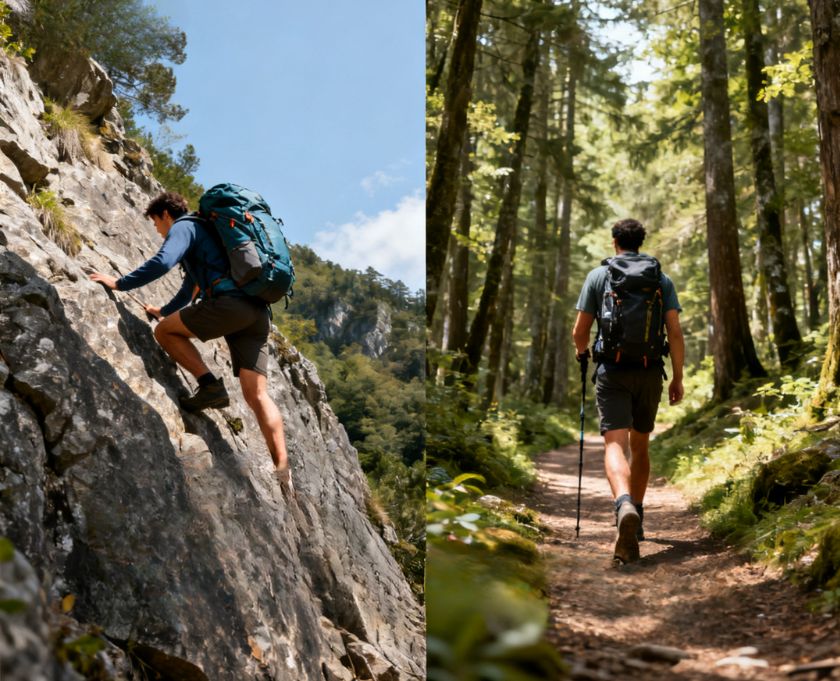Beautiful Plants For Your Interior

For outdoor enthusiasts, a backpack is more than storage — it’s a lifeline. In 2025, the challenge of designing hiking backpacks lies in finding the perfect balance between lightweight construction and high load-bearing capability.
Why Backpack Design Matters in 2025 Outdoor Adventures
A poorly designed backpack can cause back pain, fatigue, and even injuries during long treks. Modern hikers demand gear that is comfortable, durable, and efficient for diverse terrains.
The Challenge: Lightweight vs. Load-Bearing Capacity
- Lightweight packs reduce energy consumption and fatigue.
- High-capacity packs allow carrying tents, food, and gear for multi-day treks.
- The real innovation of 2025 lies in merging both advantages without compromising durability.
Core Features of Modern Hiking Backpacks
Ergonomic Load Distribution Systems
Advanced suspension spreads weight evenly across shoulders, hips, and back.
Lightweight Yet Durable Materials
Fabrics like Dyneema, Cordura, and ripstop nylon combine strength and minimal weight.
Adjustable Suspension and Back Length
Customizable fit for different body shapes enhances comfort.
Ventilation Systems for Comfort
Mesh back panels improve airflow and reduce sweating.
Smart Functional Upgrades in 2025 Hiking Backpacks
Modular Compartments and Accessibility
Quick-access side zippers and detachable pouches improve organization.
Waterproof and Weather-Resistant Fabrics
Integrated rain covers and seam-sealed zippers protect gear.
Integrated Hydration Systems
Built-in hydration bladders with hose routing simplify water intake.
Solar Charging and Smart Tech Integration
Solar panels and USB charging ports support GPS, phones, and cameras.
Weight Categories: 30L, 50L, 70L Backpacks Compared
- 30L: Best for day hikes and ultralight treks.
- 50L: Ideal for weekend trips with moderate gear.
- 70L: Necessary for long expeditions requiring camping equipment.
Common Mistakes When Choosing a Hiking Backpack
- Choosing size based on appearance, not capacity needs.
- Ignoring ergonomic suspension systems.
- Overpacking with unnecessary gear.
- Neglecting waterproof protection.
Expert Tips for Balancing Weight and Comfort
- Keep pack weight under 20-25% of body weight.
- Use compression straps to stabilize loads.
- Pack heavy items close to the back and centered.
- Regularly adjust straps during hikes.
Best Hiking Backpack Brands in 2025
- Osprey – Leading in ergonomic design and lightweight innovation.
- Deuter – Renowned for ventilation systems.
- Gregory – Known for customizable suspension.
- The North Face – Combines style with rugged performance.
- Lowe Alpine – Excellent durability for alpine expeditions.
Budget vs. Premium Hiking Backpacks
- Budget (Naturehike, Quechua): Affordable, reliable for beginners.
- Premium (Osprey, Gregory, Deuter): Advanced materials, ergonomic superiority, long-lasting investment.
FAQs: Outdoor Hiking Backpacks 2025
Q1: Are lightweight backpacks weaker?
Not in 2025 — new materials achieve both strength and lightness.
Q2: Should I choose a 50L or 70L pack?
Depends on trip duration: under 3 days = 50L, longer expeditions = 70L.
Q3: Do I need a smart backpack with solar panels?
Not mandatory, but useful for tech-heavy hikers.
Conclusion: The Future of Outdoor Backpack Innovation
In 2025, outdoor hiking backpacks are built on the philosophy of balance — combining lightweight design, high load capacity, smart features, and eco-friendly durability.
For adventurers, choosing the right backpack means ensuring safety, comfort, and performance across all terrains. The next generation of backpacks proves that less weight no longer means less strength.